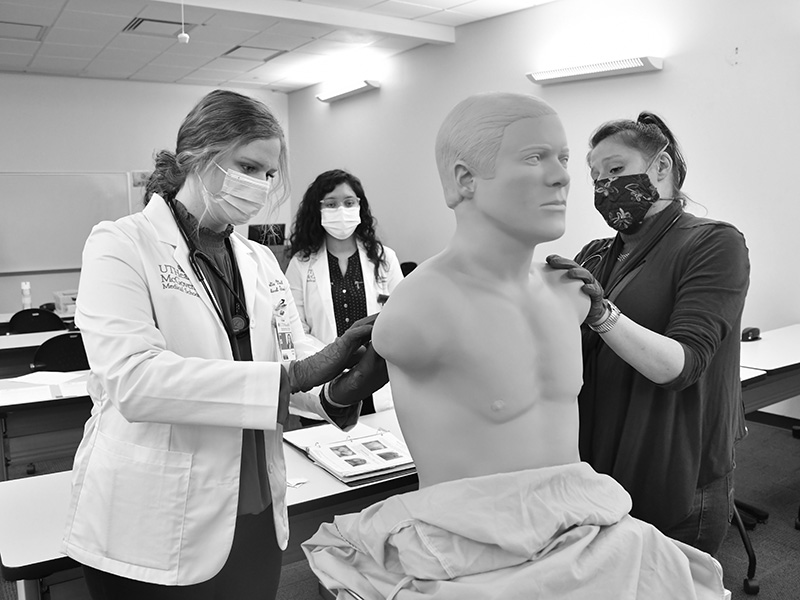Office of Educational Programs

The pandemic touched every aspect of the Office of Educational Program’s (OEP) operations in ways both large and small, but by embracing change and working to find creative solutions, OEP has continued to deliver a high-quality education to our students.
Transitioning exams to a remote format was one of the largest and most complex undertakings, requiring cooperation across departments and many faculty and staff volunteers. Almost all of our educational activities transitioned to a remote virtual format: problem-based learning, team-based learning, lectures, and gross anatomy (in person on a limited basis).
To make the experience as effective as possible, we implemented new platforms to deliver our education remotely, including InteDashboard for team-based learning and 4D Anatomy for gross anatomy. By using established vendors and systems and embracing AI remote proctoring with faculty review, we were able to successfully deliver all our exams remotely with far fewer make-up exams than in the past.
During the Doctoring courses, students learn the art of being a doctor, including history taking and physical exam skills. Typically, students practice these skills with standardized patients and take practical exams to assess their performance. To avoid putting our students and standardized patients at risk, we pivoted to a combination of video instruction, distanced skill sessions using standardized patients and manikins in large classrooms, and distanced practical exams.
Our clinical activities required considerable modification during the early days of the pandemic and had to meet the needs of three distinct groups of students – those who were just completing second year and were about to transition into clerkships, those who were completing their third year, and those who were about to graduate. All clinical activities ceased from March 2020 through June 2020, which led to the adoption of online cases, modules, streamed didactics, and interactive sessions via WebEx to meet learning requirements. Everyone was able to successfully complete their remaining coursework for the academic year using these new modalities. With the resumption of clinical activities in June 2020 and a new academic year came additional safety measures – all students were provided with PPE and were tested on their ability to properly wear it. Rounding was modified on some services to a virtual format using iPads or table rounds, and didactic sessions remained virtual.
The Surgical and Clinical Skills Center, where learners interact with standardized patients and participate in simulation activities, made major changes to their operation during the pandemic. They altered the center’s physical layout for greater social distancing to continue safely running in person skills and simulation sessions. They also set up a WebEx room kit system in the simulation rooms to accommodate students unable to attend in person. This allows the remote student to see the simulator and room setup, other students, the instructor, and to interact with everyone in the room.
“… by embracing change and working to find creative solutions, OEP has continued to deliver a high-quality education to our students.”
